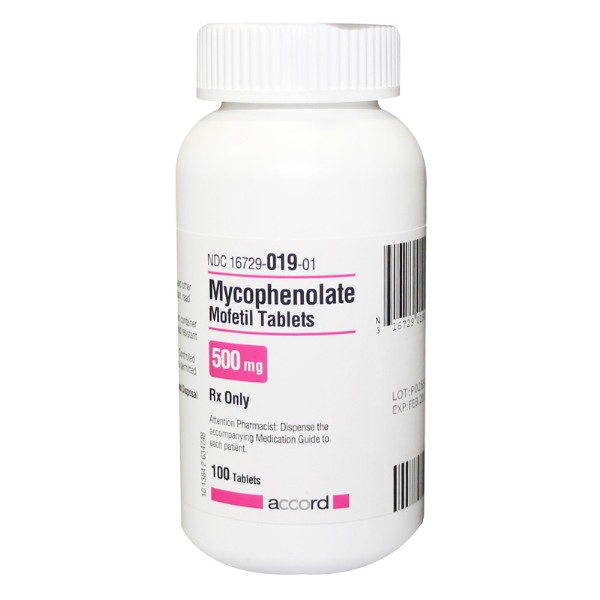About 1 in 10 dogs will face an autoimmune disease in their lives. This is why treatments like mycophenolate are so vital. It’s a key drug for treating various autoimmune disorders in dogs. This guide will help you understand how to use mycophenolate, including the right dosage, side effects, and safety tips. With this information, you can make the best decisions for your pet’s health.
Key Takeaways
- Mycophenolate is used to treat autoimmune conditions in dogs.
- The medication works by suppressing abnormal immune responses.
- Dosage varies based on the dog’s specific health condition.
- Regular monitoring is essential during treatment.
- Potential side effects need to be discussed with a veterinarian.
Table of Contents
What is Mycophenolate for Dogs?

Mycophenolate is a immunosuppressive medication used in dogs for various autoimmune diseases. It treats conditions like immune-mediated hemolytic anemia (IMHA), immune-mediated thrombocytopenia (ITP), and glomerulonephritis. Though FDA-approved for humans under names like CellCept®, it’s used off-label in vet medicine.
Dogs may take mycophenolate orally or through an IV, based on their health needs. A vet decides the best method and dosage for each dog. This ensures the medication works well and safely.
Key Information About Mycophenolate
If you have a dog, it’s important to know about mycophenolate. This medicine is key in treating autoimmune diseases in dogs. Here, you’ll learn about its names, uses, how to give it, and its FDA status.
Common Names and Drug Type
Mycophenolate mofetil, or MMF, also goes by the name CellCept®. It’s an immunosuppressive drug. This means it’s very important in vet medicine for controlling immune system problems.
Used For: Conditions Treated
Dogs with autoimmune diseases often get treated with mycophenolate. Some common problems it tackles include:
- Immune-mediated hemolytic anemia (IMHA)
- Immune-mediated thrombocytopenia (ITP)
- Glomerulonephritis
- Myasthenia gravis
- Pemphigus foliaceus
This drug plays a big role in helping dogs manage these health issues well.
Administration Methods
Mycophenolate can be taken in different forms. Dogs can take it as a pill or a liquid. If a dog needs quick results, it can also be given through an IV at the vet’s. Always talk to your vet about the best dose for your dog.
FDA Approval Status
Humans can use mycophenolate because it’s FDA-approved for us. But it’s not officially approved for dogs. Even so, vets can still prescribe it safely for your dog. They know how to use it well, even without specific canine approval.
Understanding Mycophenolate’s Mode of Action
Mycophenolate for dogs provides a focused way to treat immune-related issues. It mainly works by suppressing the immune system. This is done by stopping T and B lymphocytes from growing. These cells are crucial for immunity, but too much activity can cause problems.
The medicine stops a specific enzyme that’s necessary for lymphocytes to make purines. This leads to a weaker immune response. It helps prevent the body from rejecting transplanted organs and eases auto-immune disease symptoms.

This information lets vets create effective treatment plans using mycophenolate for dogs. Proper use and monitoring can reduce side effects. It can also improve the life quality of pets being treated.
| Mechanism | Description |
|---|---|
| Enzyme Inhibition | Blocks inosine-5′-monophosphate dehydrogenase |
| Lymphocyte Proliferation | Inhibits T and B cell growth |
| Immune Response | Reduces overall immune activity |
| Applications | Prevents organ rejection, manages autoimmune diseases |
Benefits of Mycophenolate for Dogs
Mycophenolate is a big help for dogs with health issues, especially autoimmune problems. It calms the immune system when it’s too aggressive. This guard prevents it from harming the dog’s own cells and keeps the immune response in check.
Unlike older treatments like corticosteroids, mycophenolate is easier on the body. Dogs usually feel better and can enjoy life more with fewer side effects. Their vets notice they can do their usual fun activities while keeping symptoms under control.
Mycophenolate also means a dog might not need as much of the other harsher meds. It’s customized to fit what each dog needs, focusing on their happiness and health.
| Benefit | Details |
|---|---|
| Immune System Regulation | Reduces autoimmune attacks on the body, enhancing health |
| Fewer Side Effects | Less intense side effects compared to corticosteroids |
| Improved Quality of Life | Allows dogs to engage in normal activities while managing symptoms |
| Lower Overall Medication Needs | Can decrease the necessity for higher doses of other medications |
Mycophenolate Uses in Veterinary Medicine
In veterinary medicine, mycophenolate is important for treating many conditions. It helps with diseases that affect the immune system. For example, it’s used for immune-mediated hemolytic anemia (IMHA) and immune thrombocytopenia (ITP).
Mycophenolate works well with other drugs. This combo enhances healing and leads to better outcomes. Its use in vet medicine has shown promising results, especially in tough cases.
The science world is still learning about mycophenolate’s benefits for animals. Reports show it’s good for managing chronic diseases. This offers hope to pet owners looking for answers. But, we need more research on its long-term effects.
| Condition | Mechanism | Combination Treatment |
|---|---|---|
| Immune-Mediated Hemolytic Anemia (IMHA) | Inhibits lymphocyte proliferation | Corticosteroids, Azathioprine |
| Immune Thrombocytopenia (ITP) | Suppresses immune response | Corticosteroids, Vincristine |
| Chronic Conditions | Improves immune regulation | Varies by specific condition |
We’re still finding out how best to use mycophenolate. More research will help us treat animals better. Pet owners should talk to their vets about using mycophenolate. It’s important to know both the upsides and downsides.
Mycophenolate for Dogs: Dosage Guidelines
When deciding on mycophenolate doses for dogs, it’s key to look at the dog’s health issue. A vet will give the best advice on the right dose for each dog.
Mycophenolate Dosing in Dogs
Doses usually range from 10 mg/kg to 20 mg/kg. The dose varies with the health issue’s severity and how the dog reacts to the drug.
Frequency of Administration
Mycophenolate is typically given twice a day. Taking it at the same times each day keeps the medication level steady.
Directions for Use
It works better when the dog hasn’t eaten, which makes it absorb better. If the dog’s stomach gets upset, you can give it with food.
Missed Dose Guidelines
If you forget a dose, give it as soon as you remember, unless it’s almost time for the next one. Then just skip it and stick to the regular schedule. Don’t give two doses at once because it might cause problems.

| Dosage Range | Frequency | Administration | Missed Dose Action |
|---|---|---|---|
| 10 mg/kg to 20 mg/kg | Twice daily | On an empty stomach or with food if needed | Administer when remembered, skip if close to next dose |
Potential Side Effects of Mycophenolate in Dogs
Knowing the side effects of mycophenolate in dogs is very important for owners. Just like any other medication, it can lead to several issues. Knowing about these can help in acting quickly if needed.
Common Side Effects
It’s crucial for pet owners to be aware of the usual side effects. They include:
- Gastrointestinal upset, including diarrhea
- Vomiting
- Loss of appetite
- Lethargy
- Low white blood cell counts
Serious Side Effects and Adverse Reactions
Using mycophenolate for a long time ups the risk of serious side effects. Owners must be watchful for any worrisome signs. These serious issues can be:
- Increased susceptibility to infections
- Potential development of certain cancers, mainly in dogs with weak immune systems
If your dog shows severe reactions, see a vet right away. Spotting these dangerous side effects can save your dog’s life.
| Common Side Effects | Serious Side Effects |
|---|---|
| Gastrointestinal upset | Increased risk of infections |
| Loss of appetite | Potential cancers |
| Lethargy | Severe allergic reactions |
| Vomiting | |
| Low white blood cell counts |
Mycophenolate Safety for Dogs
It’s crucial to be careful with mycophenolate for dogs, especially for those that are pregnant or nursing. This medication comes with big risks. Knowing the risks of using mycophenolate during these important times is key to protect your dog’s health.
Considerations for Pregnant and Lactating Dogs
Mycophenolate might cause severe birth defects. So, it’s not recommended for pregnant or nursing dogs unless it’s to treat serious conditions. Vets usually suggest other treatments because of the risks to the mom and puppies.
Drug Interactions and Safety Precautions
Talking about mycophenolate safety means thinking about how it mixes with other medicines. It’s important to check how it works with drugs like azathioprine and some antibiotics. Make sure the vet knows about all medicines and supplements your dog is on.
Monitoring Your Dog While Using Mycophenolate
When giving mycophenolate to dogs, it’s key to keep up with vet visits. These check-ups help check if the medicine is safe and working well for your dog. They also catch any side effects early, so your dog can get help right away if needed.
Importance of Regular Check-ups
Your vet’s exams are critical for:
- Checking blood counts for organ health
- Testing liver function for any drug effects
- Evaluating your dog’s overall health
Signs of Adverse Reactions
As a caring pet owner, watch for bad reactions to mycophenolate. Look for signs such as:
- Being too tired or weak
- Throwing up or having diarrhea
- Not wanting to eat
- Fever or swelling, showing infection
- Too much bleeding or bruising
If you see these signs, tell your vet right away. Being on top of things helps keep your dog safe while on mycophenolate.
Comparison with Similar Drugs in the Category
When we look at mycophenolate for animals, we learn a lot by comparing it with drugs like cyclosporine and corticosteroids. Each of these medicines works differently. This affects how well they work and for what illnesses they are best.
Efficacy and Use Cases
Mycophenolate does a good job at fighting immune-related sicknesses in dogs, just like cyclosporine. But it’s often chosen over others when corticosteroids could cause bad side effects. Vets think about how well each drug works to decide the best one for a dog’s health needs.
Cost and Side Effects Comparison
Caring for pets can get expensive, so the cost of medicine is important. Mycophenolate is usually less pricey, which helps pet owners. It also doesn’t cause as many side effects like weight gain or hunger as corticosteroids do. Knowing this helps choose the right treatment for dogs.
Administering Mycophenolate to Dogs
Mycophenolate for dogs is a great medication when given right. Knowing how to use and store it is key for good results and safety.
How to Give Mycophenolate
Always follow your vet’s directions with mycophenolate. It comes in tablets or liquid, and the right amount is vital. Wear gloves to avoid contamination.
You can put it directly in your dog’s mouth or mix it with food, if your vet agrees. This ensures your dog gets all of it.
Storage Requirements
Storing mycophenolate correctly is very important. Keep it at room temperature away from light and dampness.
Make sure children and other pets can’t get to it. This keeps the medication working right and everyone safe.
Conclusion
Mycophenolate for dogs is key in treating autoimmune diseases. It greatly helps dogs with such health issues. But it’s important to know the right dose and possible side effects.
Having your vet closely watch over the treatment is critical. Regular visits help check on your dog’s health and watch for side effects. It’s important to talk with your vet about the best treatment plan.
With careful use of mycophenolate, many dogs get better and live happier lives. Being safe and following your vet’s advice is key to successfully managing these health problems.
























